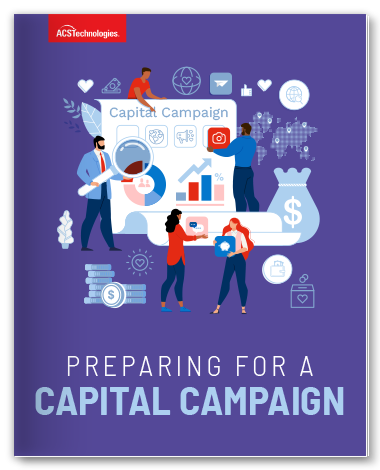Creating an Effective Capital Campaign – Part 3
Chances are good that your church is or will one day soon consider a capital campaign to raise an additional amount of funding to do something special. Perhaps you are considering a new ministry, a renovation, or a new wing or building.
In this series, we’re exploring how to conduct an effective campaign in our churches. Today, we’ll look specifically at the reasons to implement what is called the “silent phase” of a campaign.
There are three key outcomes of a silent phase. This is where we’ve not officially or publicly announced the launch of our campaign yet. But our congregants have had lots of opportunities to learn about and give input on the project. The silent phase occurs as we near the time we will be seeking gift commitments, so all members are well aware that the campaign will be launched soon.
Secure early commitments.
The silent phase of a campaign enables us to nail down the major gift commitments we hope to get toward the project. In a silent phase, we meet with our best donors individually. We take our campaign materials and research and go through it with them to get their individual feedback.
We also ask for their campaign pledge or commitment. Most capital campaigns are two or three years in duration, and donors make a commitment over that timeframe. We want to try to meet with as many of our top donors as possible in this phase to collect those commitments.
Jumpstart the public phase.
The silent phase is critical to giving momentum to the public launch of the campaign itself. When we can secure those early commitments from key givers, we can launch the campaign. And use the message that a certain number of donors or families have already collectively pledged “$ x amount” of our overall goal. We now invite everyone else to make their campaign commitments and help us reach that goal. That invitation comes as part of a public launch of the campaign, its project, and its goal.
If our silent phase doesn’t yield gifts. Or much enthusiasm. And we sense that the overall project or goal may not be achievable as is. This is the opportunity to reset it. The silent phase allows us to share the probable goals and outcomes with key donors without risking a public launch. Worst case, we can use their input to help revise and rethink our campaign scope.
Test and tweak.
Our silent phase donor meetings are valuable in giving us the temperature of the congregation. They also provide us with the rubber-meets-the-road reality of funding needs versus funding commitments.
We can use the feedback from our meetings to think through what our members might need more information about and what was confusing or not well understood. Was there confusion about the campaign fundraising and any debt the church is taking on through the project? Were there common questions each family had that could be better addressed in the campaign launch? Is there information or key testimonials that would have been helpful to those asks?
All of the silent phase meetings can help us hone our approach and messages to best plan a public launch of a capital campaign. In our final blog of this series, we’ll look closely at how to best recognize and acknowledge donors through the phases of a capital campaign.
PREPARING FOR A CAPITAL CAMPAIGN
Capital campaigns fail. Avoid the common mistakes and ensure your church’s campaign success by preparing adequately.
This article provides the phases and tools you’ll need to fully prepare your church staff, key volunteers, and donors for all a campaign entails.
Discover the key steps you’ll need to undertake to ensure your church is well-positioned to launch a campaign that will meet its goal.
Tim Smith has over 30 years of experience in Church, Non-Profit Administration, Management, and Fund Development. Serving as an Executive Pastor and Chief Development Officer in growing Churches and Non-Profit Organizations has provided a wide range of expertise and resources. Tim serves as Founder and CEO for Non-Profit DNA. A boutique firm committed to helping nonprofits and churches build their capacity through fundraising, leadership, team building, staff recruiting, and coaching.





